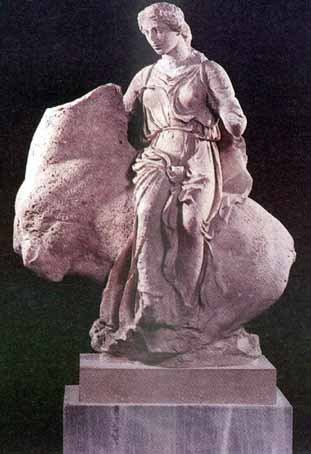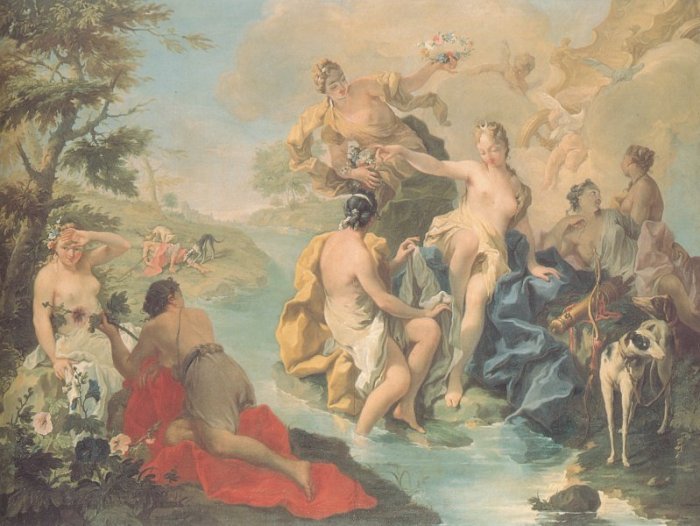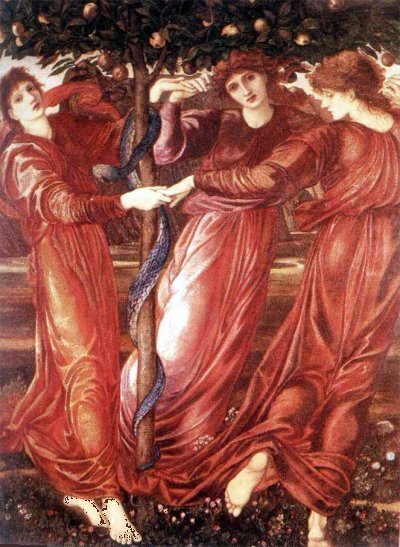Nymphs
The nymphs (Νύμφαι) were minor female deities or spirits who inhabited the mountains, woods, waters and seas. Like the gods, some were literally forces of nature. They were indistinguishable from the elements of nature.
There were quite a few different types of nymphs. The oreads lived in the mountains, while the naïads (Ναϊάδες) were nymphs of the water, such as the spring and lake. The nymphs of the trees were called dryads (Δρυάδες), hamadryads (Ἁμαδρυάδες), alseids and meliae (Μελίαδες). The Nereïds (Νηρεΐδες) were sea-nymphs. The Oceanids didn't have specific attributes of nature.
Some nymphs were named after a region or island, like Europa and Asia (Oceanids). For instance, there was an island which was named after the nymph Aegina.
Sometimes the division between nymphs and goddesses blurred, such as the case of the sea goddesses, like the Oceanid Doris, or the Nereids Amphitrite and Thetis. These three were goddesses of the sea. However, the Oceanid Metis, goddess of wisdom, had nothing to do with the sea.
It should be noted that there are some difficulties in identifying some nymphs, determining whether they were Oceanids or Nereids. This really depended on the sources that you might read. Amphitrite was identified as a Nereid in Hesiod's Theogony; whereas Apollodorus says that she was an Oceanid in one passage, but in the other she was a Nereid. And there was the obscure goddess Dione who appeared as a Oceanid in Hesiod's Theogony, but as a Titaness in Apollodorus' Library; she could even have been a Nereid.
Nymphs were sometimes worshipped alongside with the gods or heroes in their temples or sanctuaries, though these cults of the nymphs were usually found in caves.
Nymphs were often attendants to goddesses, like Artemis, or to other nymphs, like Calypso who had attendants on her island. Artemis was often seen as the mistress or goddess of the nymphs, since many of them were hunting companions of the goddess. Some nymphs attended Apollo or Hermes by looking after flocks of sheep, as shepherdesses.
The poets and writers often described the nymphs as being of great beauty. Because of their beauty, they often received unwanted attention from gods and mortals. They often tried to preserve their virginity, like the goddess they followed, but often they were powerless to resist mighty gods, like Zeus, Poseidon, Apollo or Hermes. Some were willing, but in many cases they were raped.
Often to escape from unwanted advances, even from the powerful gods, they were transformed into springs, trees, or flowers.
Most nymphs had at least one divine parent, while only a few nymphs had a mortal father and mother. Even more important iss that many of the nymphs became mothers of heroes and gods.
The term "nymph" later meant a young beautiful woman or seductress. Even more derogatory was the term "nymphomania", which was used to describe uncontrollable or excessive sexual desire in women; a woman who was insatiable.

By Jimmy Joe








